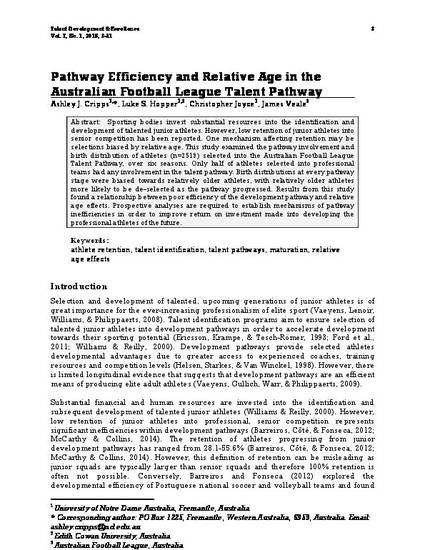
Sporting bodies invest substantial resources into the identification and development of talented junior athletes. However, low retention of junior athletes into senior competition has been reported. One mechanism affecting retention may be selections biased by relative age. This study examined the pathway involvement and birth distribution of athletes (n=2519) selected into the Australian Football League Talent Pathway, over six seasons. Only half of athletes selected into professional teams had any involvement in the talent pathway. Birth distributions at every pathway stage were biased towards relatively older athletes, with relatively older athletes more likely to be de-selected as the pathway progressed. Results from this study found a relationship between poor efficiency of the development pathway and relative age effects. Prospective analyses are required to establish mechanisms of pathway inefficiencies in order to improve return on investment made into developing the professional athletes of the future.
- athlete retention,
- talent identification,
- talent pathways,
- maturation,
- relative age effects
Available at: http://works.bepress.com/chris-joyce/4/
